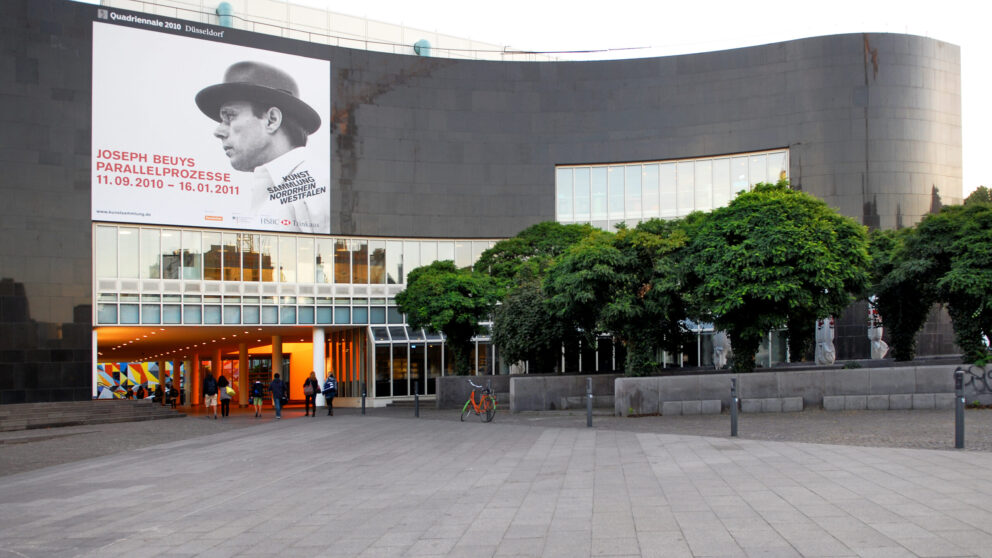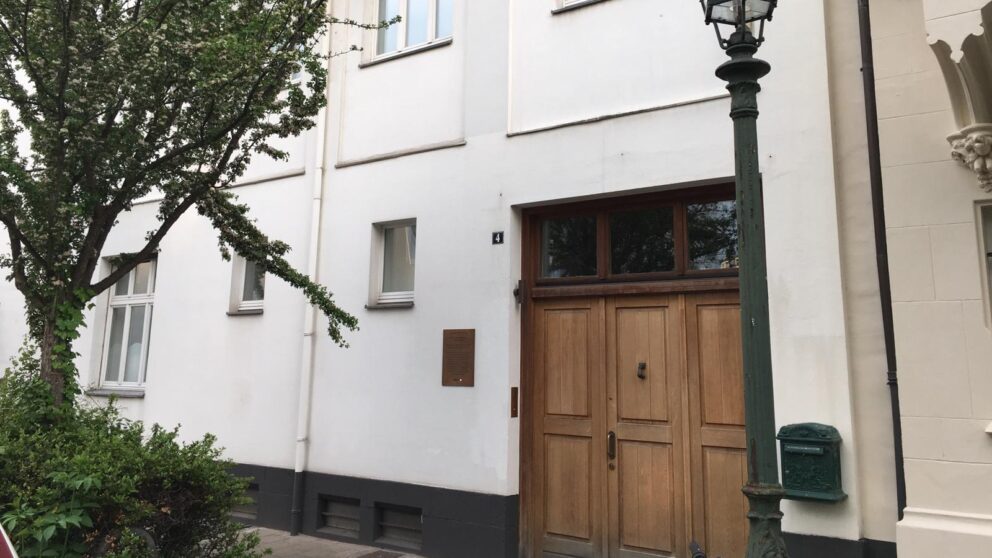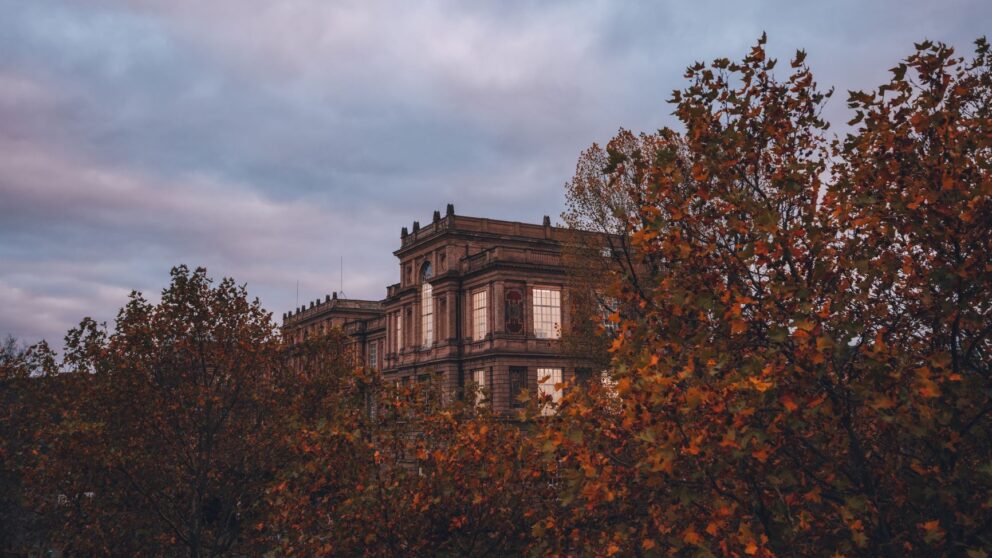
Beuys in Düsseldorf #2
100 years Joseph Beuys
The Academy of Arts
Anyone traveling in Düsseldorf automatically follows in the footsteps of Joseph Beuys. The world artist led a public life in the city, his paths and places are well documented. No other professor appeared with as much media impact as he did. There is also a legendary photo of Beuys riding his bicycle down the small staircase at Eiskellerstraße 1. Gerrit Terstiege visited the academy for us and describes how important it is for the heartbeat of the city.
The world-famous art academy in Düsseldorf is still the creative heart of the city today: a source of inspiration, a think tank. And it is a place of contrasts. This begins with its location - hidden and central at the same time. There are still those interested in culture who easily find their way to the equally legendary Kunstsammlung NRW on Grabbeplatz - but don't know that another architectural gem is waiting for them in the immediate vicinity. Because if you walk through the passage of the Kunstsammlung, where the entrance to the museum is located on the left, you will reach, along the passage and straight on, the legendary address of the Academy in just a few steps: Eiskellerstraße 1.


Stage and laboratory
For Joseph Beuys, the elongated building, situated at a slight angle to the banks of the Rhine, was both a stage and an experimental laboratory. Here, in this important neo-Renaissance building, he worked on the rebirth of art, on the shaping of his thought building, in which speaking and listening were just as important and creative for him as drawing, painting and sculpting. The artist was always concerned with the future, with constant new beginnings - not only of art, but of society as a whole: "Just as man is not there, but must first come into being, so art must first come into being, for it does not yet exist."

Beuys and his class
To get in the mood, we recommend the film "Beuys and his Class", which can be found on YouTube. This makes it clear that his teaching follows the principle of proximity and exchange: surrounded by students, Beuys discusses with an alert gaze and a quick grasp: he is silent, hesitates, gesticulates, inquires and postulates, shakes his head and laughs out loud. When you see these scenes - his gaunt face in close-up as if carved in stone - you would all too much like to have been there at that time, at least for one day, in these hallowed halls, which, by the way, do indeed echo. For the high ceilings of the studios and the round arches of the long corridors are still acoustic amplifiers of every word that is spoken here.
There is no doubt that the work Beuys left us is deeply influenced by his studies and work at the Kunstakademie. Anyone who loves the city on the Rhine, which would be a different city without its long-standing, close connection to the arts, should get to know this place and walk around the academy with its richly decorated facades at your leisure and let it take effect on you. It is worth it!
Text: Gerrit Terstiege
Gerrit Terstiege writes for magazines like art, Monopol or Mint and always enjoys writing about art and music from Düsseldorf.
Photo: Cover: Brigitte Hellgoth/ Süddeutsche Zeitung Photo
Gallery: Düsseldorf Tourism




